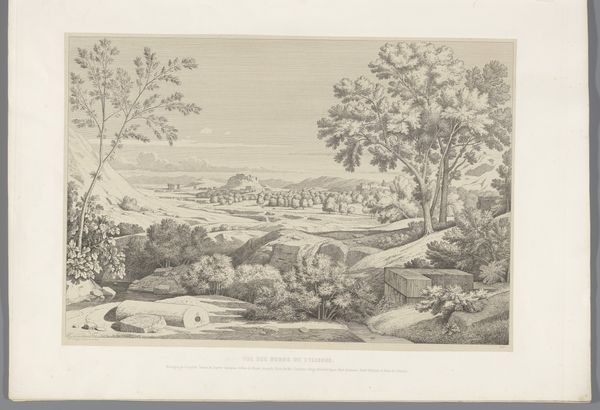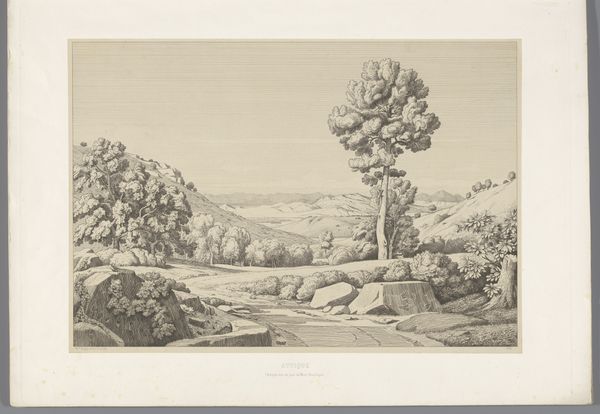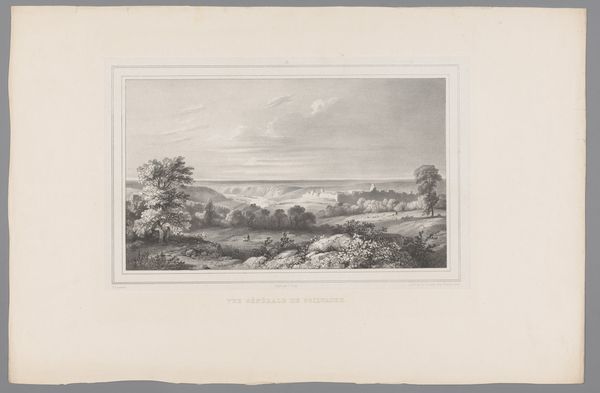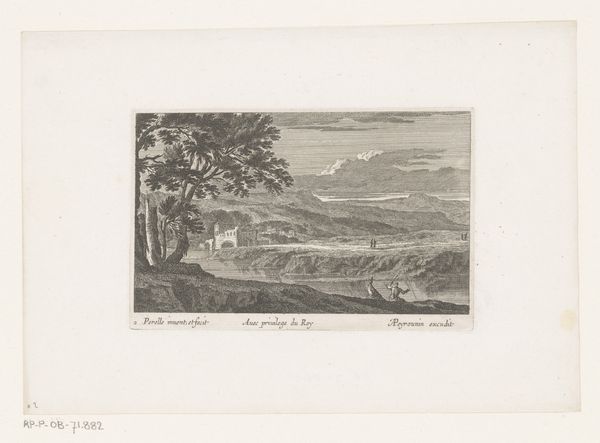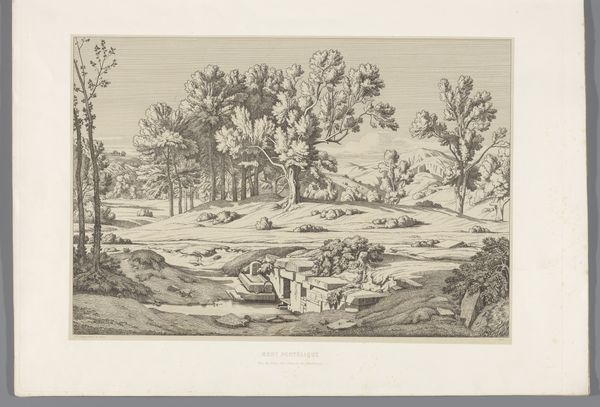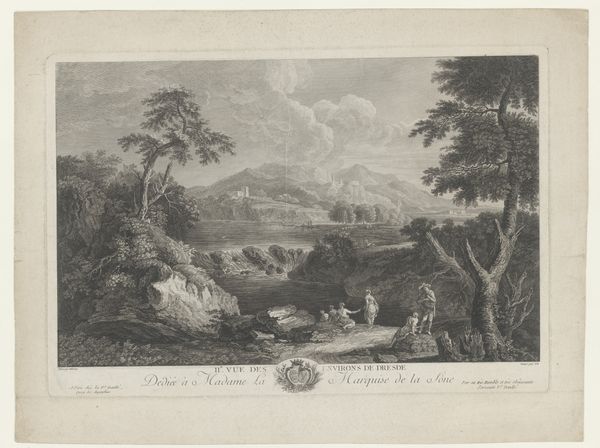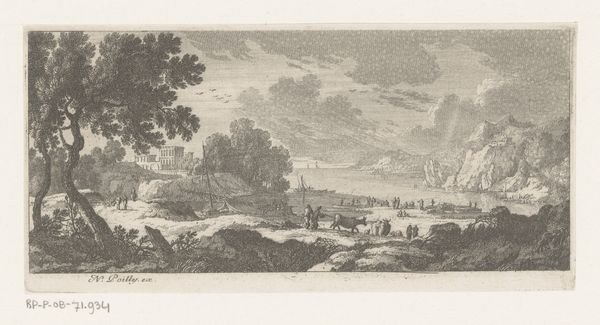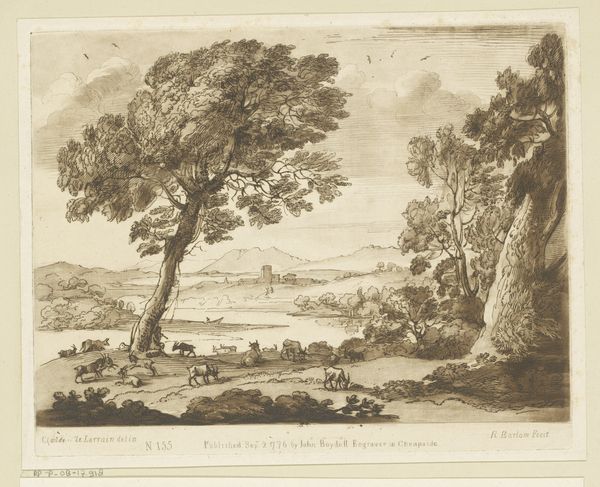
drawing, pencil
#
pencil drawn
#
drawing
#
aged paper
#
light pencil work
#
homemade paper
#
pencil sketch
#
sketch book
#
hand drawn type
#
landscape
#
personal sketchbook
#
romanticism
#
pencil
#
sketchbook drawing
#
sketchbook art
#
realism
Dimensions: height 437 mm, width 596 mm
Copyright: Rijks Museum: Open Domain
Curator: We're looking at Claude-Félix-Théodore Caruelle d'Aligny's "Landscape with a View of the Ruins of Corinth," created around 1845. Editor: There’s a haunting stillness to this landscape. It is a sepia-toned meditation in graphite. It has that sublime quality, this melancholy atmosphere… almost like a stage set. Curator: D'Aligny was quite committed to depicting classical landscapes and adhered to strict academic traditions, often contrasting stark, ruined architecture with idealized natural settings, following a Romantic tradition. This work speaks to that approach. Editor: The ruins dominate our visual field. I'm curious about the physical act of drawing these stones—the graphite layering to define textures, the decisions involved in choosing paper...Was it commercially made or from his studio? All those lines created under precise control... Curator: His style reflects the Neoclassical ideals embraced within the French Academy at the time. Think of the way it evokes historical painting and landscape genres while reinforcing the notion of European cultural dominance. We are witnessing ruins represented as romantic and sublime spectacles through a particular lens shaped by institutional priorities. Editor: That’s interesting. But isn't it equally crucial to consider how materials shaped d'Aligny's vision and impacted the very nature of his production? Graphite enables particular detailing which leads us to a reading of this ruin and its meaning-making. How available were good quality pencils during his practice? It affected what was achievable for the artist. Curator: Absolutely. The socio-political conditions undeniably informed both access to material and the market pressures driving artistic trends. This imagery serves established academic preferences while subtly reflecting that period’s fascination and power imbalance in relationship to Classical antiquity. Editor: It’s more than a historical record though. The weight and feeling that d'Aligny achieves through these simple materials creates a dialogue across time with artisans and labourers involved. A visual poem made through both a mind and by physical stuff. Curator: By exploring these issues of influence, materialism, and context, it allows us to reconsider the relationship between historical narratives and visual experiences that make up artistic practices. Editor: True—an invitation, then, to thoughtfully explore, and ultimately reshape the grand narratives with intimate, nuanced understandings of an art’s very matter and methods.
Comments
No comments
Be the first to comment and join the conversation on the ultimate creative platform.
